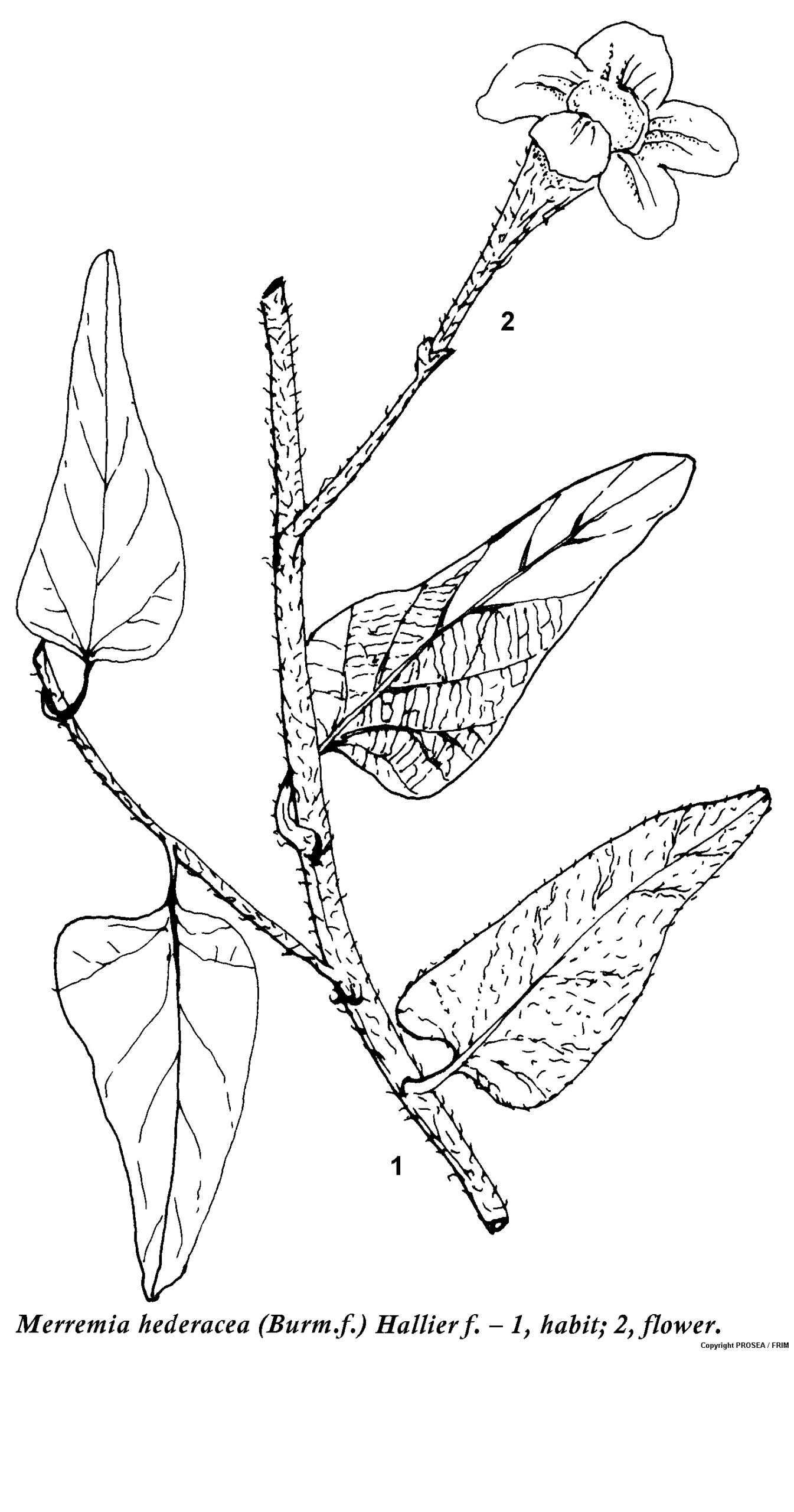Merremia hederacea (Burm.f.) Hallier f.
Family
Convolvulaceae
Synonyms
Evolvulus hederaceus Burm.f.
Vernacular Names
| Malaysia | Ulan pelandok. |
| Indonesia | Lawatan (Javanese), tatapajan (Sundanese), kelemibiet (West Kalimantan). |
| Thailand | cha uek, ma uek (eastern), thao sa uek (central). |
| Vietnam | b[if]m hoa v[af]ng. |
Geographical Distributions
Merremia hederacea is distributed from tropical Africa, Mascarene Islands, tropical Asia, from the Himalayas southwards to Sri Lanka, and eastwards to Burma (Myanmar), southern China, Indo-China and Thailand, and southwards throughout Malesia to northern Australia.
Description
M. hederacea is an annual, twining or prostrate, slender herb, with a size of measuring 1-2 m long and it is smooth to sparsely hirsute.
The leaves are ovate in outline, with a size of measure about 1.5-5 cm x 1.2-4 cm, broadly cordate base, obtuse apex and mucronulate in shape. The leaves margin is an entire or crenate to shallowly or deeply 3-lobed while the petiole is measure about 0.5-6 cm long.
The flowers are few to several. The first ramification is dichasial while the subsequent ones are often monochasial. The peduncle is measuring about 1-10 cm long, with a size of measure 3 mm long of the narrow-obovate bracts and caduceus. The flower-buds are oblong in shape, a size of measure about 2-4 mm long pedicel, concave sepals, broadly obovate to spoon-shaped, with a size of measuring 4-5 mm long, broadly notched at the apex and mucronulate. The measuring 6-10(-12) mm long petal is bell-shaped. It is hairless outside and with long hairs inside. It is a yellow in colour while the base of filaments is hairy.
The capsule is broadly conical to depressed-globular in shape, with a measuring about 5-6 mm high and wrinkled. The seed is measure about 2.5 mm long and it is pubescent or nearly smooth.
Ecology / Cultivation
M. hederacea occurs in thickets, open grasslands, and on sandbanks, from sea-level up to 250 m altitude. Two forms can be distinguished: f. pubescens Ooststr., with shortly pubescent seeds, and f. barbata Ooststr., with seeds having reddish-brown long hairs on the hilum and margins when ripe.
Line Drawing / Photograph
References
- Plant Resources of South-East Asia No. 12 (2): Medicinal and poisonous plants.


